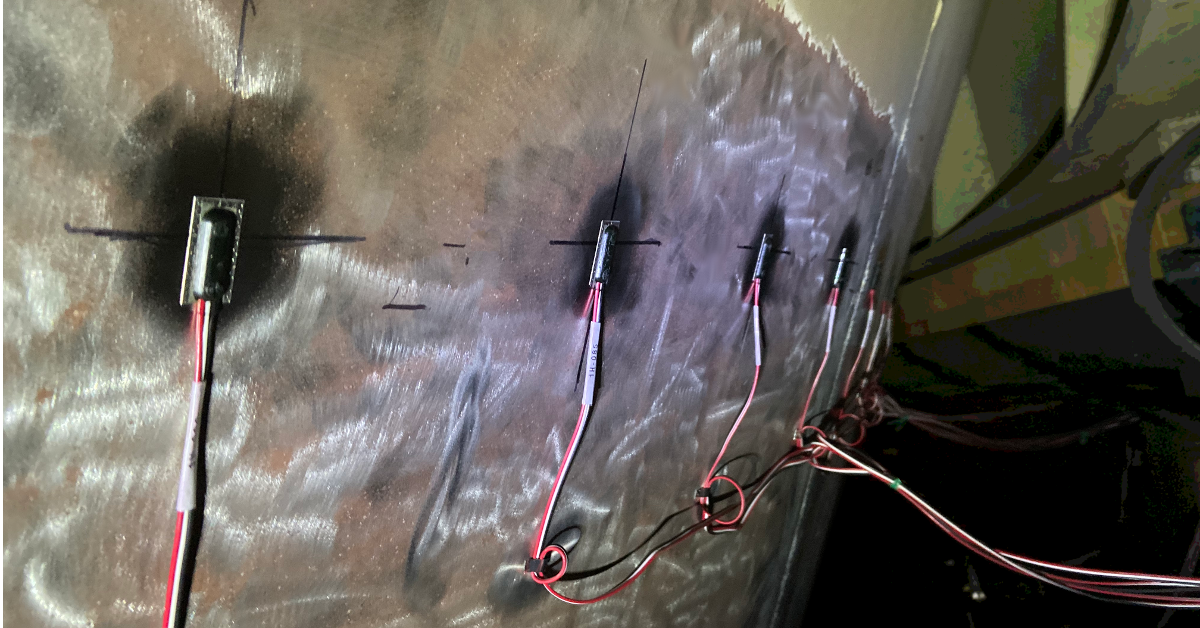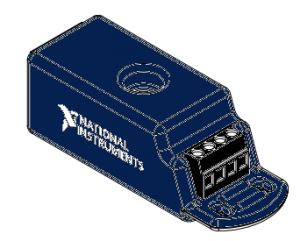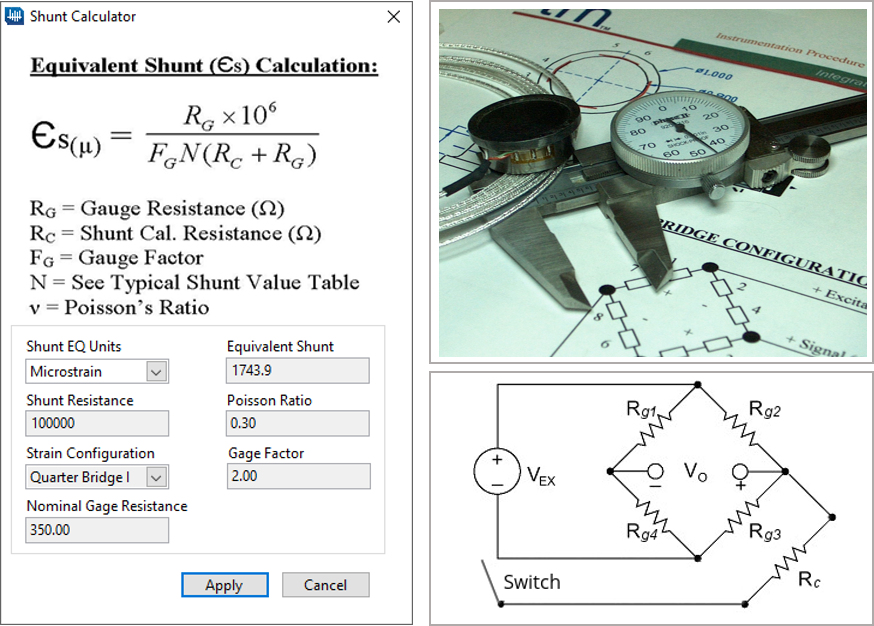Lattice Boom Crane Structural Design Validation
A case study describing a strain gauge DAQ system used to validate several new designs of a heavy lift lattice boom crane to comply with SAE J987 standards.
A case study describing a strain gauge DAQ system used to validate several new designs of a heavy lift lattice boom crane to comply with SAE J987 standards.
At ITM, we understand that our customers do not settle for good enough. When it comes to measuring and capturing data for real-world applications and structural analysis, you cannot compromise, so neither can we. Instead of having to pick and choose the most critical locations to measure, we ensure that you can capture every piece of data you need, simultaneously. Whether that is a single strain bridge, or thousands of strain channels, we make your data logging project a success.
On past projects, we have worked with our customers in the manufacturing industry to test the structures of their aerospace, mining, construction and other transportation equipment. Some of these applications not only needed to collect strain, vibration, voltage, and other signals simultaneously but also required well over a thousand total sensor channels. Network synchronization technology embedded within the NI cDAQ chassis allow users to account for the sheer number of channels during these structural tests. The true secret to our success in these high-channel jobs has been our iTestSystem software which leverages the cDAQ’s synchronization technology while providing an intuitive data acquisition and sensor configuration and setup.
iTestSystem is far more than just a barebones data collection software. It can be a time saver to our engineers by helping to sort channels, keep various tasks organized, and even provide an easy and quick way to view results with the integrated TestView Plus Application (shown below).

The mining shovel pictured below, which is similar to other equipment that ITM has instrumented in the past, illustrates a distributed data acquisition system for collecting data. Using iTestSystem, we can implement a modified tree synchronization topology to collect data from over 20+ cDAQ chassis simultaneously. Data can be collected in one giant file containing all sensor channels or saved into separate files based on location. In past projects, we saved over 1000 channels from strain, acceleration, and voltage sensors into a new file every 10 minutes. We added the sensor location to the sensor description, including the Boom, Operator Cab, Main Frame and Base. This allowed us to easily sort data both during and after the collection.

Our goal at Integrated Test & Measurement is to provide efficient testing solutions and services to address your company’s needs. If you need to measure high channel counts, or have questions about our rugged DAQ systems, software, rental equipment or testing services, then please contact ITM by phone or e-mail.
Contact Information: For more information on this Article, please visit iTestSystem.com or contact: Ryan Welker – Integrated Test & Measurement (ITM), LLC – ryan.welker@itestsystem.com or (844) 837-8797

When it comes to measuring structural stresses and load, every application is unique, and sometimes that means using a different solution. In some cases where strain gauges are applied, it can be advantageous or even necessary to use weldable strain gauges instead of chemical bonding the strain gauges to the specimen.
Since many epoxies used to chemically bond strain gauges require specific heat and pressure for curing, it can be difficult or even impossible to use this method on large or irregular structures. Weldable strain gauges offer an advantage in this situation as they eliminate the need to clamp and cure any epoxies for bonding. In addition, weldable gauges can be installed in a variety of environments and weather conditions which offers additional advantages over traditionally bonded strain gauges. Although weldable strain gauges are applied differently, they function in much the same way as their bondable counterparts.
To properly install a weldable strain gauge, you will need:
Always remember to have the proper safety equipment on hand, such as eye protection and gloves, as well as any PPE required by your environment.
When installing a weldable strain gauge, you must first prep the area. Unlike bondable gauges, the area does not need to be polished to a fine degree. Simply degrease the gauge area, sand down any paint, coatings or excess debris and ensuring the area is purely metallic and free of chemicals is enough. A clean metal surface is important to the welding process.
After the part has been cleaned, you can position the gauge. Most weldable gauges come marked so you can align the grid properly. When the gauge is properly aligned, spot weld the gauge on either side of the gauge along the centerlines, to hold it firmly in position and prevent shifting as the gauge is welded further. Once secure, the gauge should be welded all around the carrier surface, as illustrated below.

Recap:
For more information about our strain gauging and testing services, contact Ryan Welker @ (844) 837-8797 x702.
Related Links

Quarter Strain Bridge with Completion Circuit
The most common strain gauges used to quantify the state of stress on a test specimen’s surface, are uniaxial and rosette gauges. For accurate measurements of stress and strain, these uniaxial and rosette gauges are independently connected as a Wheatstone bridge in a 3-wire quarter-bridge or half-bridge arrangement.
Strain Gauge Installations for Field Testing | Strain Gauge Services | tshirt-Strain Gauge Services Rectangular Rosette | Engineering Data Acquisition Tools: NI-9237 Bridge Input Module
Custom PTO Shaft Strain Gauge Transducer by ITM | Custom Strain Transducer Service | Custom Strain Gauge Measures KitchenAid Shaft Load
Today, most high-end data acquisition equipment manufacturers provide signal conditioning options for collecting data from single strain gauges. Signal conditioning for strain gauges usually includes circuitry for bridge excitation voltage, quarter and half bridge completion arrangements, and shunt calibration.
Are you looking for expert assistance with accurately measuring stress and strain? or, Do you need to rent or buy data acquisition equipment to collect stress and strain data?
Sometimes you may need to view or collect data from a single strain gauge using a device that only has analog voltage inputs and no strain signal conditioning. This was precisely the case when I was working with the HX711 load cell/strain amplifier. The HX711 requires a full bridge input so I instrumented my test specimens as such. If I needed to use a single strain gauge with the HX711, I would have had to use an external bridge completion circuit.
Option 1: Buy a commercial off the shelf bridge completion modules.
The list below gives the specifications for some available bridge completion modules. I plan on adding more completion modules to this list for future reference, so send me any additional completion options.
 |
 |
 |
|
| Manufacturer | NI | VPG | Campbell Scientific |
| Model # | NI 9926, NI 9945, NI 9944 | MR1-10C-129, MR1-350-130, MR1-120-133 | 4WFBS1K, 4WFBS350, 4WFBS120 |
| Description | 3-Wire Quarter Bridge Completion | 3-Wire Quarter Bridge Completion | 3-Wire Quarter Bridge Completion |
| Resistance | 1000 Ω, 350 Ω, 120 Ω | 1000 Ω, 350 Ω, 120 Ω | 1000 Ω, 350 Ω, 120 Ω |
| Strain Gauge Connector | Terminal Block | Solder Tab | Terminal Block |
| Device Connector | RJ50 | Solder Tab | Pins and Lead Wire |
Option 2: Build your own circuit.
If you are building a product or are in the strain business long term, building your own circuit may be a cost effective alternative to the potentially more expensive off the shelf bridge completion option. I have built a few bridge completion circuits in the past. Here is a list of things to keep in mind when designing a circuit.
For more information about bridge completion or our strain gauging services, contact Ryan Welker @ (844) 837-8797 x701.
Related Links
Strain Gauge Installations for Field Testing
iTestSystem Tip: Strain Gauge Rosette Analysis
Wireless Strain Measurements with iTestSystem, LabVIEW, and Arduino
When troubleshooting structural failures or validating FEA models through testing, strain gauge rosettes are used to find the full state of strain at areas of concern around the structure. iTestSystem’s Rosette Analysis tool is used to calculate the principal strain, principal strain angle, shear strain, principal stress, and other values from strain gauge rosette data. This video shows how to use the Rosette analysis tool.
For questions about using the Rosette Analysis tool or other iTestSystem analysis tools contact Chase Petzinger.
Download your free version of iTestSystem today.

Image1: Shaft torque strain gauge installation example for field testing
Our engineers and technicians have epoxied, soldered and spot welded strain gauges for applications ranging from high temperature exhaust systems to miniature load cell measurements. Every application requires a unique understanding of the strain measurement requirements including installation environment.
If the strain gauge installation is to survive in the field you must plan for the conditions it will undergo. Three important variables that you should account for are temperature range, liquid exposure, and potential impact forces. These variables determine the type of strain gauge, epoxy, solder, wiring, coating, and impact/wear protection to use in the application. The table below shows which variables affect your installation choices.
| Gauge | Epoxy | Solder | Wiring | Coating | Covering | |
| Temperature | ||||||
| Liquid Exposure | ||||||
| Impact Forces |
Table1: Strain gauge installation variables
For more information about ITM’s strain gauging services contact Ryan Welker at email: ryan.welker@itestsystem.com or phone: 1.844.837.8797 x702

Come see us at the VIATC 2019 Exhibit Hall in Booth 33!
Ryan Welker and Mark Yeager (CAT III Vibration Analysts) will be there to answer questions about our iTestSystem engineering measurement platform, our on-site testing services, LabVIEW consulting, and strain gauging services.
When: July 24 & 25th
Where: The VIATC 2019 conference and exhibit hall will take place at the Lexington Center, connected by a joint lobby to the Hyatt Regency Lexington.

When making strain measurements it is important to perform a shunt calibration both before and after the actual measurements are acquired. Shunt calibrations ensure accurate strain measurements by adjusting the sensitivity or gain of the data acquisition equipment to compensate for leadwire resistance and other scaling errors.
iTestSystem takes advantage of the shunt calibration circuits included in the National Instruments (NI) cDAQ strain modules. The NI-9235, NI-9236, and NI-9237 strain modules contain an internal shunt resistor that when switched on “shunts” across one leg of the strain circuit’s wheatstone bridge. When active, the shunt resistor offsets the strain measurement by a constant strain which is calculated using the equivalent shunt calculation. The equivalent strain/shunt value is dependent on the strain gauge configuration, gauge resistance, shunt resistance, gauge factor, and material properties.

In the latest version of iTestSystem, we added a built-in strain gauge shunt equivalent calculator that can be accessed from the strain configuration page. This calculator has allowed us to speed up the calibration process and eliminate hand calculation errors.
For a free trial of iTestSystem and the equivalent shunt calculation tool, contact chase.petzinger@itestsystem.com.
As a part the ITM Live Demo series, we’re excited to release this video featuring iTestSystem and National Instruments FieldDAQ™ hardware to assist with your data collection projects.
At ITM, we’re always on the lookout for tools that will help us take tough measurements. When we heard that NI was introducing a new device that features IP65/67-rated ingress protection, we were very excited. In many industrial or off-way environments, there is potential for fluids to splash or leak onto exposed hardware. Could the NI FieldDAQ™ be a solution for these types of environments?
Watch now as I demonstrate how to use an NI FieldDAQ™ Strain Device with iTestSystem for data logging and answer the question; Will it work while submerged in water?
If you’re interested in learning more about iTestSystem or FieldDAQ™, feel free to contact one of our test specialists by e-mail at info@itestsystem.com or phone at (844) 837-8797.

Quantifying stress, strain and force within a structure using real world strain gauge measurements is commonly used to verify FEA models and estimate a component’s fatigue life. Our engineers and technicians have planned and implemented challenging strain gauge installations for our customers around the globe. Information from these strain gauge installations has allowed our customers to validate their designs and improve their product’s reliability.
For more information about these applications and our strain gauging services, contact Ryan Welker via email ryan.welker@itestsystem.com or phone: (844) 837-8797 x702
ITM | Integrated Test + Measurement
227 Water Street, Suite 300
Milford, OH 45150
Phone: 1.844.TestSys
Fax: 513.248.8453
Email: ITM Sales

ITM provides software development, structural and mechanical testing services, industrial monitoring, strain gauging, and data analysis solutions to clients on six continents. ITM is a recognized National Instruments Gold Alliance Partner.

